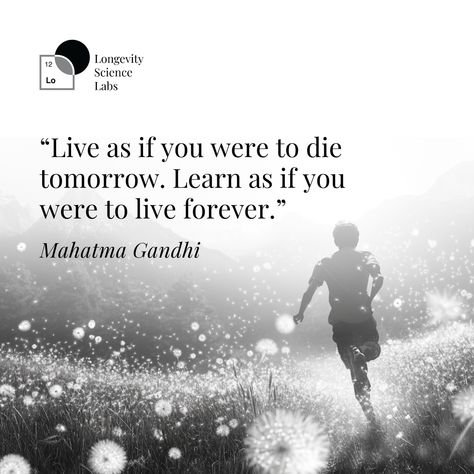Understanding the Philosophy of “Slow is Smooth and Smooth is Fast”
The phrase “slow is smooth and smooth is fast” is more than just a catchy slogan—it’s a mindset that has proven invaluable in various fields of life, including military tactics, sports, and even personal growth. At its core, it emphasizes the idea that patience, precision, and deliberate actions often lead to faster and more effective results in the long run.
The concept has its roots in military training, particularly in environments where precision and careful execution are critical. However, it has since been adopted by many high-performance fields, from sports to entrepreneurship. By understanding and internalizing this philosophy, individuals can transform their approach to problem-solving, leading to more efficient and successful outcomes.
Table of Contents
The Origins of “Slow is Smooth and Smooth is Fast”
The phrase slow is smooth and smooth is fast originates from military culture, particularly in the training of Navy SEALs. In high-stress situations, rushing can often lead to mistakes, which then waste time and resources. The SEALs were taught to move deliberately and with purpose, allowing their actions to be smooth, precise, and ultimately faster.
By emphasizing calm and controlled movements, military personnel are better able to assess situations, think critically, and execute their tasks effectively. The result is often a higher level of efficiency, despite seemingly moving at a slower pace. The principle has since been adopted in various other fields, proving its utility beyond the military.
The Connection Between Patience and Precision
When you adopt the principle of “slow is smooth and smooth is fast,” you start to realize that the key to success isn’t always about speed. Instead, it’s about doing things correctly, which often means taking the time to think, plan, and execute well. This approach directly counters the common misconception that working faster equates to getting more done.
In many cases, working too quickly leads to mistakes. These mistakes, whether in work, sports, or personal projects, often require correction, which ultimately takes more time and effort than if the task had been approached with more patience from the start.
Why “Slow is Smooth and Smooth is Fast” Works in Business

The principle of “slow is smooth and smooth is fast“ can be applied to the world of business, particularly in the context of decision-making and strategy. In today’s fast-paced, results-driven business environment, many leaders feel pressured to make quick decisions. However, rushing decisions without fully understanding the consequences can lead to disastrous outcomes.
When business leaders embrace the idea that taking time to understand the problem and consider the best course of action leads to smoother and more successful outcomes, they can make decisions with greater confidence. This thoughtful, measured approach can yield results that are faster and more effective than simply rushing through decisions in a race against time.
Applying “Slow is Smooth and Smooth is Fast” in Personal Growth
Personal growth is another area where the philosophy of “slow is smooth and smooth is fast” shines. Many people seek immediate results when trying to improve themselves, whether through fitness, learning new skills, or changing habits. However, personal development is often a slow and steady process that requires patience.
Taking small, deliberate steps toward your goals is much more sustainable in the long run than trying to make drastic, hasty changes. By focusing on consistent, incremental progress, you are more likely to achieve lasting results. The slow pace allows for proper integration of new habits and skills, leading to smoother transitions and a faster, more efficient process in the end.
The Role of Mindfulness in “Slow is Smooth and Smooth is Fast”
Mindfulness plays a critical role in embracing the idea that “slow is smooth and smooth is fast.” By practicing mindfulness, individuals become more aware of their thoughts, emotions, and actions. This awareness allows them to slow down and make more deliberate decisions.
Incorporating mindfulness into everyday life means taking the time to fully engage in each task, rather than rushing through them. When you slow down and focus on the present moment, you eliminate distractions and unnecessary stress, allowing for smoother, more efficient progress toward your goals.
Overcoming the Urge to Rush
In a world that often values speed and instant gratification, resisting the urge to rush can be challenging. However, adopting the philosophy of “slow is smooth and smooth is fast” means actively resisting the temptation to hurry through tasks. When you prioritize quality over quantity, you are more likely to achieve lasting success.
Overcoming the impulse to rush starts with understanding that speed is not always an indicator of productivity or success. It’s about shifting the mindset to one that values precision, patience, and deliberate action. This shift can help you approach both personal and professional challenges with a more thoughtful and effective strategy.
How “Slow is Smooth and Smooth is Fast” Improves Performance
Whether you are training for a sport, working on a creative project, or tackling a complex problem at work, the principle of “slow is smooth and smooth is fast” can help improve your performance. In sports, for example, athletes who rush through their training sessions may experience burnout or injury, while those who focus on smooth, controlled movements are able to build strength and endurance over time.
By taking a more measured approach to performance, individuals can improve not only their skills but also their ability to execute under pressure. Whether you’re a musician, a painter, or a coder, focusing on quality and precision ultimately allows for faster and more successful results.
Real-Life Examples of “Slow is Smooth and Smooth is Fast”
The philosophy of “slow is smooth and smooth is fast” is not just a theoretical concept; it’s been proven in countless real-life situations. Take, for example, the case of a professional chef. In a busy kitchen, it’s tempting to rush through prep and cooking. However, experienced chefs know that taking the time to carefully prepare ingredients and cook each dish with attention to detail leads to better results. Their smooth, deliberate actions lead to a faster, more effective kitchen operation overall.
Another example can be found in the world of sports. In activities such as golf, tennis, or swimming, athletes who rush through their motions are more likely to make mistakes, which slow them down. On the other hand, athletes who focus on smooth, controlled movements tend to perform better and achieve faster results.
Embracing the Journey: The Long-Term Benefits of “Slow is Smooth and Smooth is Fast”

Ultimately, the key takeaway from “slow is smooth and smooth is fast” is that achieving mastery and success requires patience, persistence, and deliberate action. In a world that often prioritizes immediate results, it can be easy to overlook the long-term benefits of slowing down.
By embracing this philosophy, you allow yourself the time and space to grow, learn, and improve. Whether you’re working on a complex project, improving your personal habits, or developing new skills, slowing down can help you achieve smoother and faster results in the long run.
Also read 58 Celsius to Fahrenheit: A Complete Temperature Conversion Guide
Conclusion: Mastering the Art of “Slow is Smooth and Smooth is Fast”
In a world that moves at lightning speed, the idea of “slow is smooth and smooth is fast” serves as a reminder that taking the time to be deliberate and thoughtful can lead to better, more efficient outcomes. This philosophy encourages patience, precision, and quality, all of which contribute to long-term success.
By embracing this mindset, you can transform your approach to challenges in both your personal and professional life. The journey may be slower, but the rewards—greater efficiency, better results, and lasting success—are well worth the effort. The key is to trust the process and remember that smooth, controlled actions ultimately lead to faster progress.


